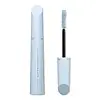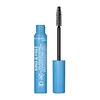What's inside
What's inside
 Key Ingredients
Key Ingredients

No key ingredients
 Benefits
Benefits

 Concerns
Concerns

 Ingredients Side-by-side
Ingredients Side-by-side

Water
Skin ConditioningAmmonium Acrylates Copolymer
Copernicia Cerifera Cera
EmollientGlyceryl Stearate Se
EmulsifyingCandelilla Cera
EmollientSucrose Stearate
EmollientGlyceryl Stearate
EmollientVp/Hexadecene Copolymer
Propanediol
SolventC10-18 Triglycerides
EmollientLecithin
EmollientPolybutene
Cera Microcristallina
Emulsion StabilisingHydrogenated Vegetable Oil
EmollientOleic Acid
EmollientAlcohol Denat.
AntimicrobialStearic Acid
CleansingArginine
MaskingCaesalpinia Spinosa Gum
Skin ConditioningStearyl Stearate
EmollientBenzyl Alcohol
PerfumingCaprylyl Glycol
EmollientDisodium Deceth-6 Sulfosuccinate
CleansingPanthenol
Skin ConditioningSimethicone
EmollientLaureth-30
CleansingSodium Dehydroacetate
PreservativeTrisodium Ethylenediamine Disuccinate
Glycerin
HumectantCeramide Ng
Skin ConditioningAcacia Senegal Gum
MaskingCI 77491
Cosmetic ColorantCI 77492
Cosmetic ColorantCI 77499
Cosmetic ColorantCI 77007
Cosmetic ColorantWater, Ammonium Acrylates Copolymer, Copernicia Cerifera Cera, Glyceryl Stearate Se, Candelilla Cera, Sucrose Stearate, Glyceryl Stearate, Vp/Hexadecene Copolymer, Propanediol, C10-18 Triglycerides, Lecithin, Polybutene, Cera Microcristallina, Hydrogenated Vegetable Oil, Oleic Acid, Alcohol Denat., Stearic Acid, Arginine, Caesalpinia Spinosa Gum, Stearyl Stearate, Benzyl Alcohol, Caprylyl Glycol, Disodium Deceth-6 Sulfosuccinate, Panthenol, Simethicone, Laureth-30, Sodium Dehydroacetate, Trisodium Ethylenediamine Disuccinate, Glycerin, Ceramide Ng, Acacia Senegal Gum, CI 77491, CI 77492, CI 77499, CI 77007
Water
Skin ConditioningCandelilla Cera
EmollientButyrospermum Parkii Butter
Skin ConditioningPolyglyceryl-6 Distearate
EmulsifyingDimer Dilinoleyl Dimer Dilinoleate
EmollientCopernicia Cerifera Cera
EmollientGlycerin
HumectantPolyglyceryl-10 Myristate
Skin ConditioningCetyl Alcohol
EmollientGlyceryl Caprylate
EmollientLeuconostoc/Radish Root Ferment Filtrate
AntimicrobialXanthan Gum
EmulsifyingArginine
MaskingPhenethyl Alcohol
MaskingBiotin
AntiseborrhoeicIron Oxides
Water, Candelilla Cera, Butyrospermum Parkii Butter, Polyglyceryl-6 Distearate, Dimer Dilinoleyl Dimer Dilinoleate, Copernicia Cerifera Cera, Glycerin, Polyglyceryl-10 Myristate, Cetyl Alcohol, Glyceryl Caprylate, Leuconostoc/Radish Root Ferment Filtrate, Xanthan Gum, Arginine, Phenethyl Alcohol, Biotin, Iron Oxides
Ingredients Explained
These ingredients are found in both products.
Ingredients higher up in an ingredient list are typically present in a larger amount.
Arginine is an amino acid that is important for human development. Your body uses is it to produce hair keratin and skin collagen.
As a cosmetic ingredient, Arginine has antioxidant properties and can also help repair damaged skin. This ingredient is derived either synthetically or from animals.
Arginine isn't fungal acne safe when used in the presence of other lipids (fats, fatty acids, oils, esters, etc). Oils and fats occur naturally within the skin, so take caution when using Arginine if you're prone to fungal acne.
Learn more about ArginineCandelilla Cera isn't fungal acne safe.
This ingredient comes from a palm tree native to Brazil. This ingredient is used to thicken texture and leaves behind a film when applied.
Glycerin is already naturally found in your skin. It helps moisturize and protect your skin.
A study from 2016 found glycerin to be more effective as a humectant than AHAs and hyaluronic acid.
As a humectant, it helps the skin stay hydrated by pulling moisture to your skin. The low molecular weight of glycerin allows it to pull moisture into the deeper layers of your skin.
Hydrated skin improves your skin barrier; Your skin barrier helps protect against irritants and bacteria.
Glycerin has also been found to have antimicrobial and antiviral properties. Due to these properties, glycerin is often used in wound and burn treatments.
In cosmetics, glycerin is usually derived from plants such as soybean or palm. However, it can also be sourced from animals, such as tallow or animal fat.
This ingredient is organic, colorless, odorless, and non-toxic.
Glycerin is the name for this ingredient in American English. British English uses Glycerol/Glycerine.
Learn more about GlycerinWater. It's the most common cosmetic ingredient of all. You'll usually see it at the top of ingredient lists, meaning that it makes up the largest part of the product.
So why is it so popular? Water most often acts as a solvent - this means that it helps dissolve other ingredients into the formulation.
You'll also recognize water as that liquid we all need to stay alive. If you see this, drink a glass of water. Stay hydrated!
Learn more about Water